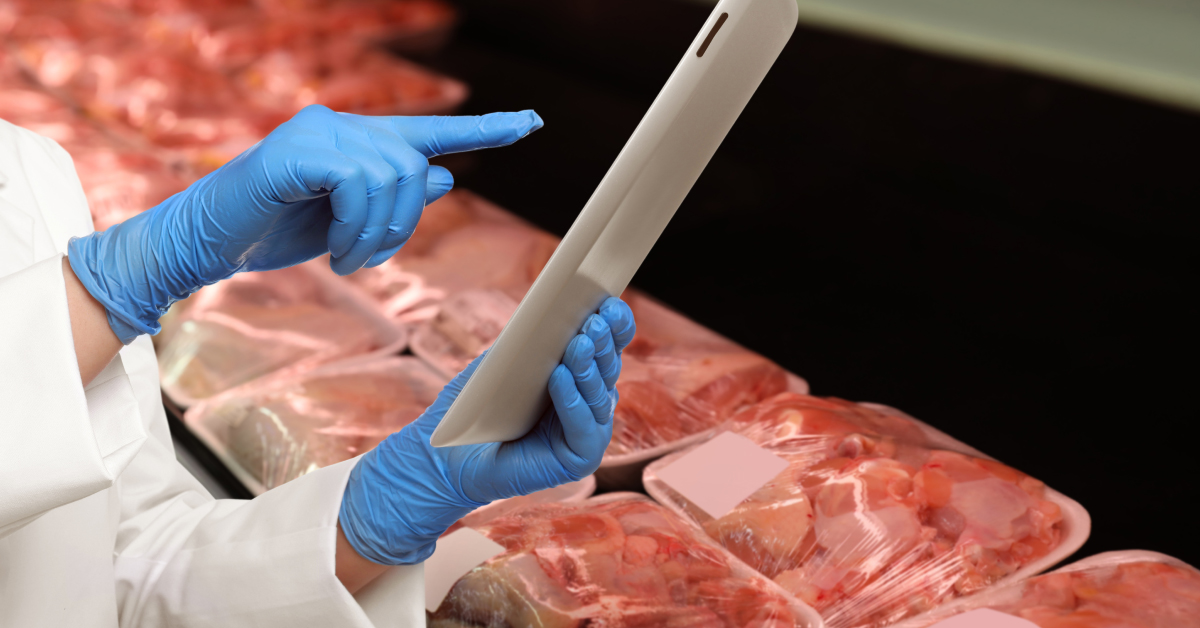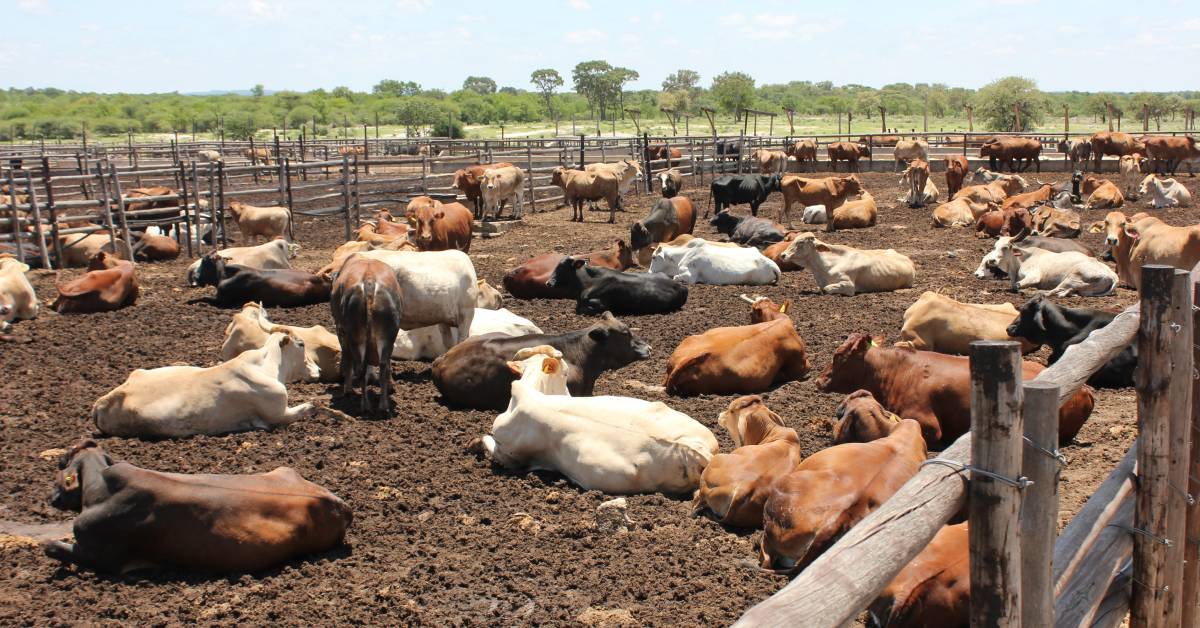Introduction:
The importance of HACCP plans in meat processing cannot be emphasized enough. These plans are the foundation of food safety measures, founded on rigorous hazard analysis and crucial control point identification.
HACCP plans are implemented to guarantee that processing plants maintain rigorous quality assurance standards by methodically identifying potential risks. By protecting against pollutants, infections, and quality deterioration, this organized approach to risk assessment management boosts consumer confidence.
HACCP plans also play a crucial part in regulatory compliance by coordinating processing procedures with societal and industrial standards. These strategies represent a dedication to the highest quality and meet safety industry standards.
Understanding HACCP in Meat Processing:
What is HACCP? Explaining the HACCP Concept and Its Significance
HACCP, or Hazard Analysis and Critical Control Points, is an organized technique for guaranteeing meat safety by detecting, assessing, and controlling possible food safety hazards in the food manufacturing process. It is crucial in meat processing.
It systematically identifies potential biological, chemical, and physical threats to the safety and quality of meat. A HACCP plan for meat processing has three main objectives:
- Prevention
- Risk reduction
- Regulatory compliance
The plan attempts to remove or limit infection-related risks, contamination, and quality variations by identifying crucial control points and adopting stringent monitoring and control methods.
This strategy protects customer confidence and health while also bringing meat processing techniques into compliance with strict industry standards and regulations.
The Key Principles Of HACCP For Meat Processing: A Brief Overview
The seven HACCP principles form a careful framework essential for guaranteeing food safety, especially in the preparation of meat. The first premise entails undertaking a hazard analysis to identify potential dangers.
A thorough grasp of meat products’ biological, chemical, and physical risks is necessary. The second concept concerns locating critical control points (CCPs), key moments where risks can be avoided, eliminated, or scaled back to acceptable levels.
The third principle then monitors and regulates these CCPs to reduce foodborne hazards. The fourth principle demands that monitoring processes and corrective measures be implemented.
The fifth principle addresses system effectiveness verification, assuring continuing compliance. The sixth premise is to record all processes and records, while the seventh principle is to reevaluate the HACCP plan in meat processing to accommodate changes.
In a meat processing plant, this framework demands a meticulous and science-based approach to hazard analysis due to the susceptibility of varying grades of meat to various contaminants and pathogens.
Systematic implementation of these principles ensures meat safety and underscores the industry’s commitment to the highest quality and consumer protection standards.
Building Blocks of an Effective HACCP Plan for Meat Processing
Identifying Hazards: Recognizing Potential Risks in Meat Processing
Meat processing is fraught with various hazards, encompassing biological, chemical, and physical categories. Biological hazards include pathogens like Salmonella, E. coli, and Listeria from improper handling or cross-contamination.
Chemical hazards involve the presence of antibiotics, pesticides, or additives, posing risks to consumer health. Physical hazards comprise foreign objects, such as metal fragments, bones, or glass, originating from equipment malfunction or human error.
Processing plants must vigilantly address these hazards to ensure food safety. Consistent temperature control can prevent bacterial growth, and rigorous testing can detect chemical contaminants.
Additionally, stringent quality control measures, such as proper equipment maintenance and staff training, can minimize physical hazards. By staying vigilant against these specific risks, processing plants uphold the integrity and safety of their meat products.
Determining Critical Control Points (CCPs): Where Safety Measures Are Crucial
Critical areas in food processing, known as CCPs, require certain safety controls to prevent, eliminate, or decrease hazards to acceptable levels. Identifying CCPs in the meat processing industry requires a rigorous evaluation of each process stage.
Identifying potential biological, chemical, or physical dangers, assessing their likelihood and seriousness, and deciding whether control measures are necessary are all part of this process.
A CCP might be the cooking stage used to manufacture ground beef, for example, to kill germs. Meat processors strategically concentrate their efforts by identifying CCPs, ensuring that safety precautions are performed precisely where they are most necessary to safeguard the integrity of the finished product.
Establishing Critical Limits: Setting Boundaries for Safe Meat Processing
Critical limits, integral to HACCP Compliance, are predetermined boundaries for factors like temperature, pH, or time set at Critical Control Points (CCPs). They play a pivotal role in averting hazards by ensuring that processes are under control.
These limits act as decision points: corrective actions are initiated to maintain safety if breached.
Defining and measuring critical limits necessitates combining scientific data, industry expertise, and regulatory mandates. Quantitative parameters like temperature are set based on microbial growth thresholds.
Qualitative limits, like visual inspections of foreign objects, rely on sensory assessment. Tailored to each process, critical limits form a vital bridge between theory and practice, upholding food safety.
How to Successfully Implement an HACCP Plan For Meat Safety?
Developing Monitoring Procedures: Ensuring Ongoing Compliance
Consistent monitoring is essential to maintain essential limitations and guarantee food safety. It ensures that procedures stay within safe bounds, stopping risks in their tracks. Regular food safety inspections, data gathering, and prompt reactions to deviations are essential to effective monitoring systems.
Different CCPs use different tactics, such as microbial testing for cleanliness, automated sensors for temperature management, and optical checks for foreign objects.
Establishing explicit protocols, educating people, and using cutting-edge technology promote accurate and effective monitoring. This strict regulation ensures that food products maintain quality, adhere to legal requirements, and protect consumer health.
Corrective Actions: Addressing Deviations and Ensuring Meat Safety
Corrective actions are crucial in managing deviations from critical limits and ensuring food safety and quality. When limits are breached, swift measures are taken to rectify the situation and prevent compromised products from reaching consumers.
For instance, if a cooking temperature falls below the critical limit, immediate corrective action could involve extending cooking time.
Similarly, halting the line and addressing the issue promptly is paramount if foreign objects are detected during processing. Effective corrective actions, backed by well-defined protocols, maintain product integrity and uphold the integrity of the HACCP system in meat processing.
Verification and Validation: Assessing the Effectiveness of Your HACCP Plan
Verification and validation are two separate yet connected processes in the HACCP plan for meat processing. While validation certifies the system’s effectiveness, verification ensures the system is implemented appropriately. Both are necessary for preserving food safety.
Moreover, compliance can be verified by comparing actual practices to the intended measures. To validate it, obtain scientific proof that the plan’s control mechanisms properly manage dangers. Challenge testing or historical data analysis may be involved in this.
Knowing how to write a HACCP Plan should not be enough. Processors should review and revise the HACCP plan for meat processing frequently to account for changes. By verifying and validating thoroughly, processors may ensure that their strategy remains a dependable risk buffer.
EcoDocs: Simplifying HACCP Plan Management
Introducing EcoDocs: Your Comprehensive Compliance Management Solution
“EcoDocs” is a great digital compliance management tool created to simplify the management of HACCP plans for processing plants. EcoDocs offers a comprehensive strategy to assure compliance with USDA facility requirements with features adapted to the demands of the business.
Hazard analysis, critical control point monitoring, and implementing corrective actions are made simpler by its user-friendly interface.
Thanks to EcoDocs, processing plants can easily uphold strict food safety regulations. This innovative technology centralizes paperwork, data collection, and reporting and represents the future of compliance management, supporting the integrity of HACCP programs while increasing efficiency and accuracy.
How EcoDocs Enhances HACCP Plan Development and Implementation
With unparalleled efficiency, EcoDocs revolutionizes developing, documenting, and carrying out HACCP protocols. This sophisticated tool makes it easier to identify crucial control points, plan remedial actions, and conduct hazard assessments. It also makes it easier to delegate tasks, ensuring they are completed on schedule and with clear responsibility.
The platform’s built-in communication tools encourage teamwork and speed up plan implementation.
Conclusion:
The article highlights the critical role of Hazard Analysis and Critical Control Points (HACCP) plans in meat processing, emphasizing their pivotal significance in safeguarding consumer health and product quality.
These plans serve as a systematic approach to identifying and mitigating potential biological, chemical, and physical hazards throughout the processing stages. By systematically pinpointing potential risks, HACCP plans stand as a cornerstone of food safety measures in the industry.
The advent of “EcoDocs,” a ground-breaking digital solution that aims to streamline compliance management for the creation and execution of HACCP plans, serves as the narrative’s focal point.
The platform’s capabilities make traversing the intricate world of control point identification and hazard analysis remarkably simple.
“EcoDocs” helps processing facilities streamline procedures so important data is efficiently documented, responsibilities are assigned, and team members can communicate more easily.
The importance of “EcoDocs” rests in its potential to fundamentally alter how the HACCP plan for meat processing is carried out. Beyond merely speeding up processes, the tool’s capabilities change the compliance management landscape.
Centralizing documentation and data collection improves the integrity of food safety measures by promoting transparency, correctness, and accessibility.
FAQs
What is the primary goal of a HACCP plan for meat processing?
A HACCP plan in the meat processing industry aims to assure food safety by methodically identifying, assessing, and controlling possible risks that can jeopardize the safety and quality of meat products.
A HACCP plan’s main goals include identifying crucial control points, implementing measures to prevent, eliminate, or decrease hazards, systematically monitoring those points, and implementing remedial procedures if deviations occur.
The objectives of this systematic approach are to preserve consumer health, uphold legal compliance, and guarantee the greatest levels of meat quality and safety.
How does a HACCP plan contribute to meat safety and quality?
A well-designed HACCP plan greatly improves meat safety and product quality through its rigorous approach. The plan successfully reduces biological, chemical, and physical threats by identifying key control points and implementing particular procedures.
This directly avoids pollutants, pathogens, and quality deviations in meat processing. To safeguard the integrity of the finished product, rigorous monitoring and timely corrective actions guarantee that any possible hazards are quickly addressed.
A strong HACCP plan in meat processing ensures the safety and quality of meat products while fostering consumer confidence and regulatory compliance.
What are critical control points (CCPs), and why are they important?
Critical Control Points (CCPs) are specific stages in food processing where controls can be applied to prevent, eliminate, or reduce hazards to acceptable levels. They are crucial because they directly impact the safety and quality of food products.
Focusing on CCPs effectively manages potential risks, ensuring that hazards like pathogens, contaminants, and quality deviations are controlled at the most critical stages.
This systematic approach to identifying and managing CCPs is fundamental to upholding food safety quality standards and delivering safe and high-quality products.
How can processing plants effectively monitor and verify their HACCP plans?
Processing plants may ensure effective HACCP plan monitoring and verification by performing routine checks at Critical Control Points and comparing actual data against established critical limits.
They should also use microbiological testing or historical data analysis to confirm the plan’s efficiency. Consistent reevaluation and modifications to the HACCP plan are necessary to maintain continuous compliance.
How does EcoDocs assist in the development and management of HACCP plans?
By streamlining hazard analysis, critical control point monitoring, and corrective action management, EcoDocs speeds the creation of HACCP plans for meat processing.
The documentation is centralized, allowing quicker access and better record-keeping, ultimately improving the effectiveness and precision of food safety processes.







